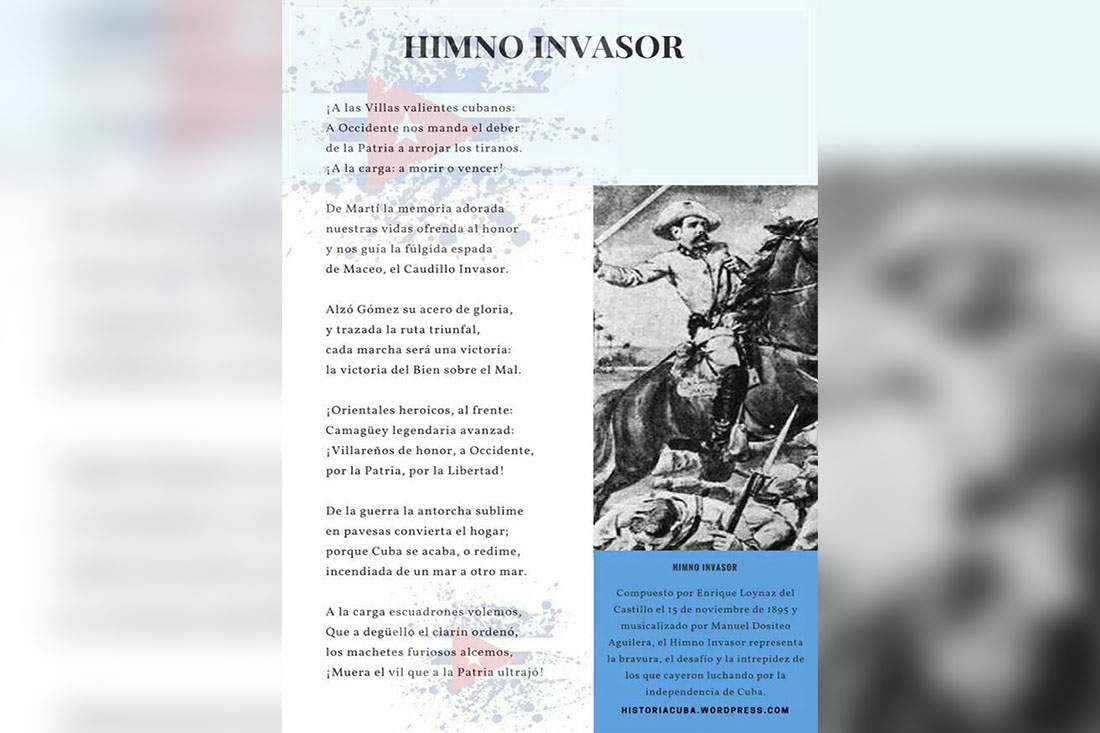Arrival of the invading column at La Matilde farm
Commanded by the Bronze Titan, the invading column arrives at La Matilde. The place had been converted into a colonial barracks by Spanish troops. For this reason, upon arrival, the mambises found in one of the windows some written expletives and a Spanish flag as a signature.
It is valid to clarify that there are different versions regarding the eviction or not of the Spanish soldiers by the mambi forces; well, on the one hand, some sources allege that the site was hastily abandoned, while others expose the expulsion by the Cubans.
As a response to this situation, Enrique Loynaz del Castillo is asked to write some verses. After listening to them, Maceo entrusted the task of putting them to music and incorporating them into the band’s repertoire so that he could play them in combats and victories. Initially, it would be an anthem dedicated to this great figure of the fights; but he suggested that his name be removed. This is how a symbol dedicated to triumph and the independence process was born.
Moments in which the Invading Anthem was performed
Perhaps one of the most important moments is when the troops sing it when they reach the path from Júcaro to Morón, where Máximo Gómez was waiting for them. It is also performed when the invading company arrives in Mantua, and even manages to cross the Cuban borders.
Without a doubt, the creative facet of the young Enrique Loynaz del Castillo reaches its highest point with the Invading Anthem; although the somewhat romantic vision and the search by this hero for his place within history must be recognized.
For this reason, as Francisco Zaragoza Zaldívar affirms, Loynaz del Castillo is given special relevance in the authorship of the composition.
Summarizing…
With the Invading Anthem, played for the first time at Finc La Matilde farm on November 15th, 1895, Enrique Loynaz del Castillo managed to unite and represent the generations of mambises whose sole purpose was to achieve the independence of Cuba, by composing a marching song with which any Cuban of the time identified.
References
– Aparicio, Raúl. Hombradía de Antonio Maceo. Contemporáneos UNEAC, 1966.
– García de la Torre, Luis. “Himno Invasor de Cuba o el segundo canto patrio de la Isla”. Revista Latinoamericana de Ensayo, 2017.
– Zaragoza Zaldívar, Francisco. “La Patria soy yo: el discurso autobiográfico de Enrique Loynaz del Castillo en Memorias de la Guerra”. Dosier. Caracol 10.
Translated by: Aileen Álvarez García






